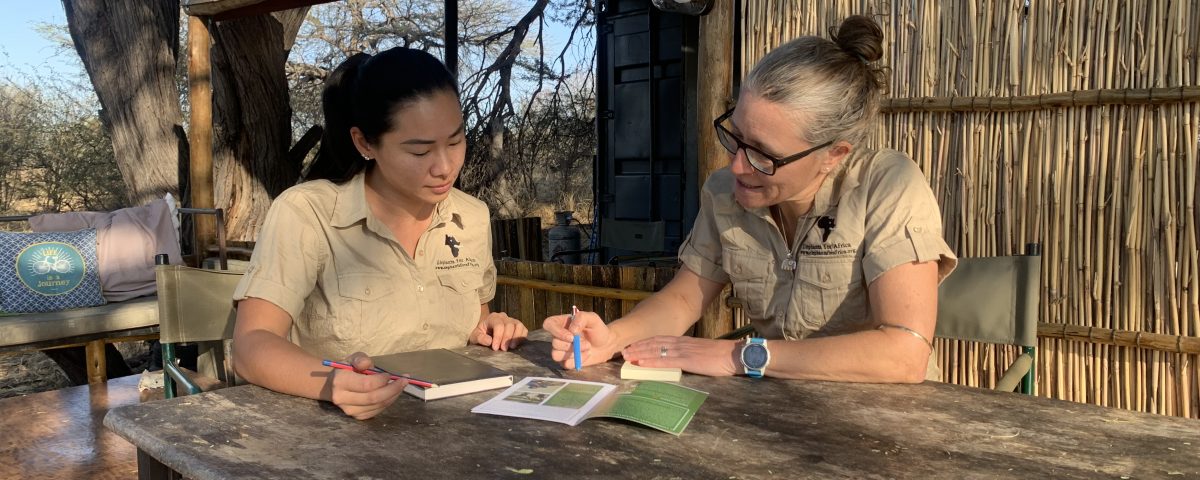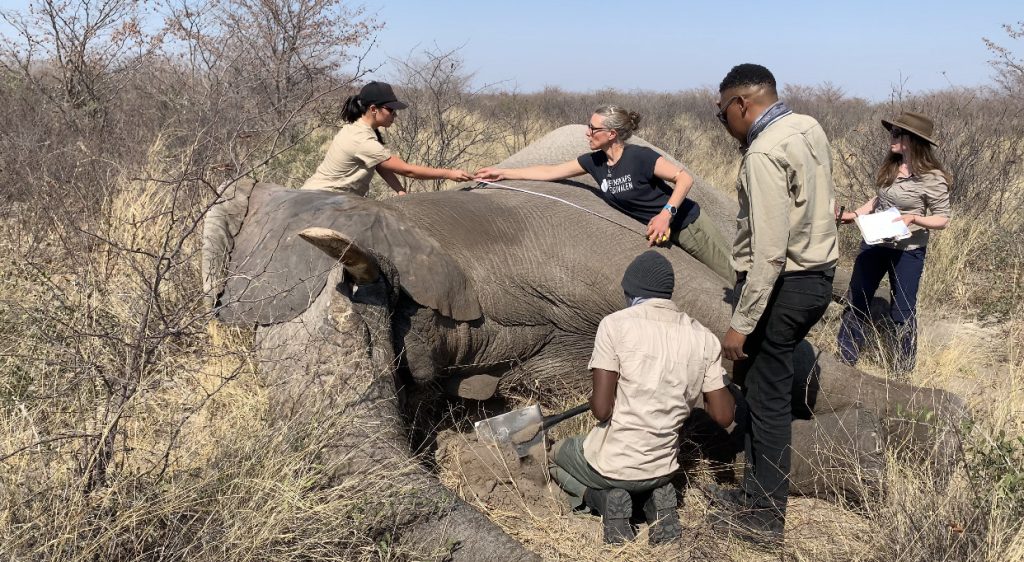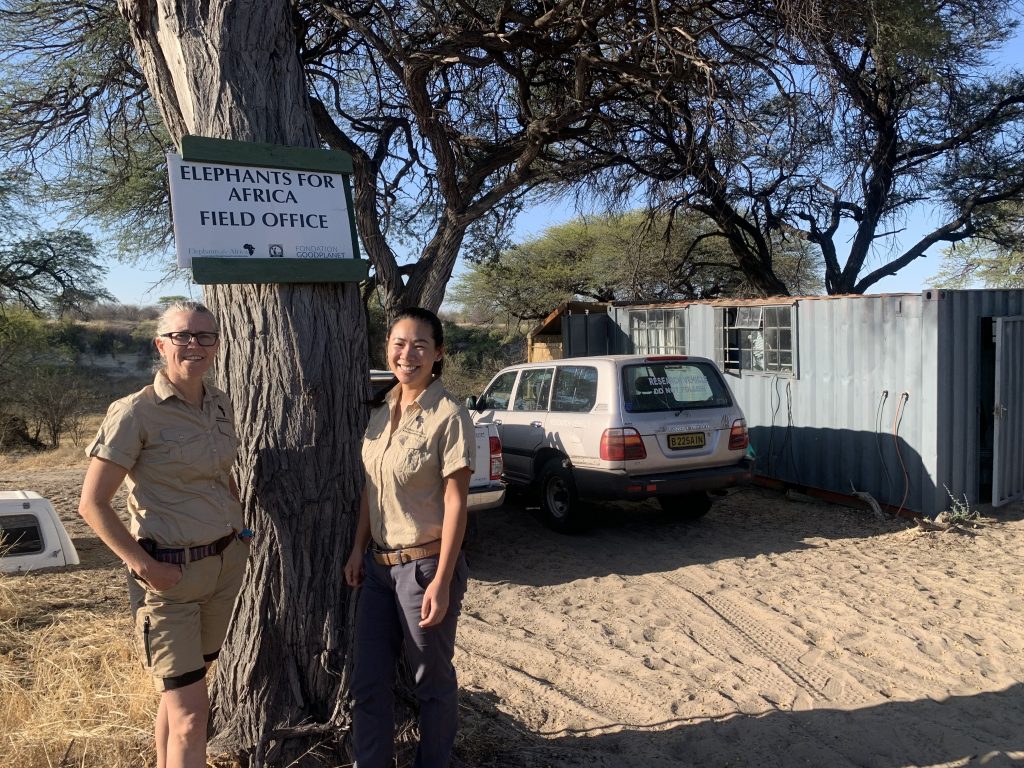
Meet our new Community Outreach Officer
February 8, 2022
Collaring by Helen Mylne
September 20, 2022Stephanie Kong joins the team

Being a life-long enthusiast of exploration and wildlife; Botswana has always been on the top of my list to visit. The allure of its’ vast wilderness that holds the largest elephant population has made Botswana a Crown Jewel to many safari enthusiasts. Fast forward over a decade into my professional career as a Wildlife Biologist; I begin my most significant and exciting step in my career as the Project Manager for Elephants for Africa.
My timing was impeccably lucky, where in just two short weeks after I touched down at the remote Makgadikgadi Field Camp, I would be joining one of the biggest and boldest research projects in EfA history. In addition to acclimating to life in an unfenced bush camp, my first few weeks heavily consisted of preparing for the massive undertaking of collaring ten bull elephants in the Makgadikgadi Pans National Park. This would involve the orchestrated use of a spotter plane, helicopter, 4×4 ground crews, and an international team representing 7 countries.

The days of collaring felt surreal. The first morning was filled with anticipation as I anxiously kept asking myself “what did we forget?” As the plane and helicopter touched down to meet us, it all came into focus. After some equipment testing on the tarmac, teams split up and moved in all directions. I would be leading the Ground Crew and tasked with communications between the teams. Once we were in the park, we awaited confirmation that we could move in once a bull was successfully darted. Having worked in Kruger National Park, seeing wild elephants was not new to me; however, seeing a wild sleeping giant up close was an unforgettable and almost mythical encounter. Team members sprung into action; some with measuring tapes to document their impressive body length, others with nail-clippers and plastic bags to collect DNA locked away in toenail clippings, and others preparing the 12 kg collars with counterweights, nuts, and bolts. Teams moved seamlessly as a crewmember diligently recorded each piece of valuable data. After two days, ten giants successfully wore their new collars.
As incredible as the collaring experience was, we can’t forget that our work has just begun. We will be tracking these elephants over the next few years and in doing so, will bring valuable data to EfA to inform management and conservation decisions in the region. The collars not only will use GPS to tell us WHERE they are going, but the accelerometers will also elucidate WHAT they are doing. This novel approach has never been attempted on this scale before; and if successful, may act as a valuable case study that can inform other high-conflict areas to benefit both elephant and human communities. Only time will tell, but in the meantime, I will marvel at my unique introduction to Botswana.

